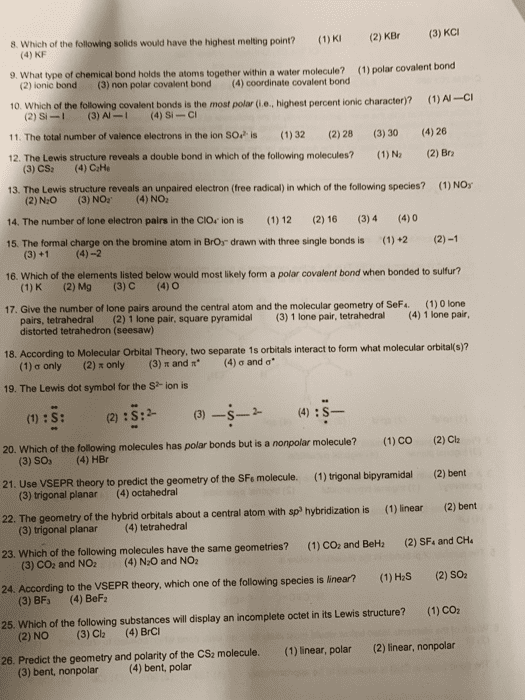CHEM1011 Lecture Notes - Lecture 12: Bond Order, Octet Rule, Lewis Structure

CHEM1011 – Chemistry 1A – Part 8
LEC 12: *Continued
• Polyatomic ions: behave as a unit covalently bonded with an overall charge that can
then form ionic bonds with other ions. E.g. NH4+ + 2 NO3- → NH4(NO3)2.
o NO3- is bonded covalently but because of its extra electron the molecule acts
as an ion.
• Electronegativity: a measure of how strongly an atom can attract an electron in a
chemical bond.
• Bond polarity can be determined by the difference in electronegativity of the two
atoms.
o > 1.7 = ionic
o 0.4 – 1.7 = polar covalent
o < 0.4 = non-polar covalent
o Polar covalent bond shorthand:
LEC 13: Bonding – Lewis Structures
Theory
• Equilibrium bond length is the distance where energy is at its minimum between
the attractive and repulsive forces in a bond.
• Diatomic: molecule consisting of two atoms.
• Homonuclear: molecules composed of one element.
• Lewis structures:
o Elemental symbols represent atoms
o Only valence electrons shown
o Lines represent a bond
o Dots represent non-bonding electrons
• Bond order = number of shared electron pairs (single bond = bond order of 1,
double bond = bond order of 2, triple bond = bond order of 3)
• Octet rule: an atom (other than H) will usually form enough bonds to be
surrounded by 8 valence electrons.
1. Determine all valence electrons in atoms in the compound
2. Add bonds between atoms
3. Minus number of electrons used to make bonds from overall valence e-
4. Add the rest of valence electrons on outside atoms first, then central
atom
find more resources at oneclass.com
find more resources at oneclass.com


